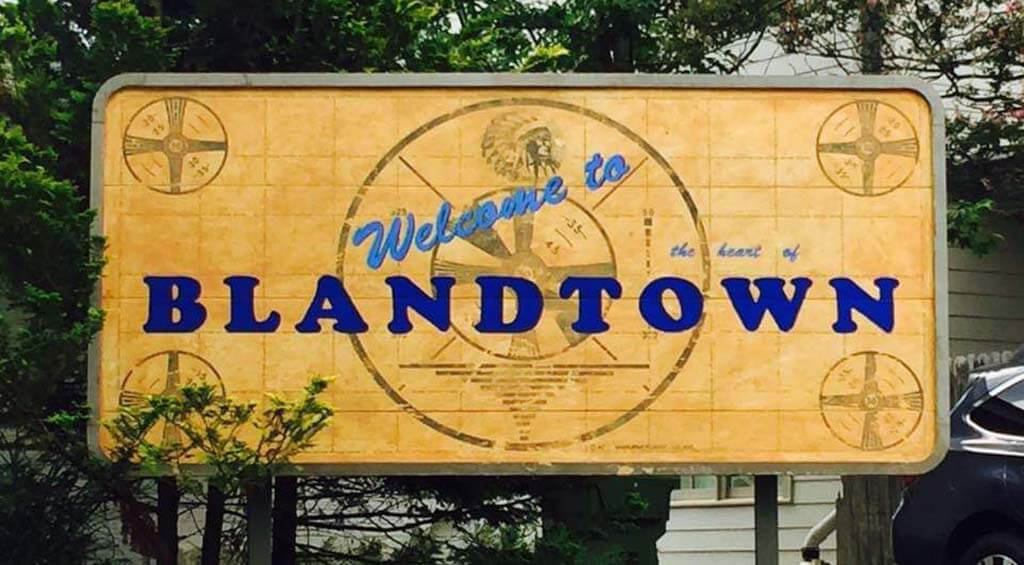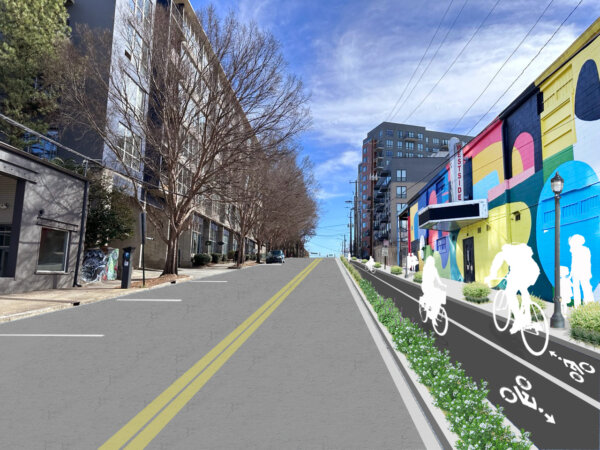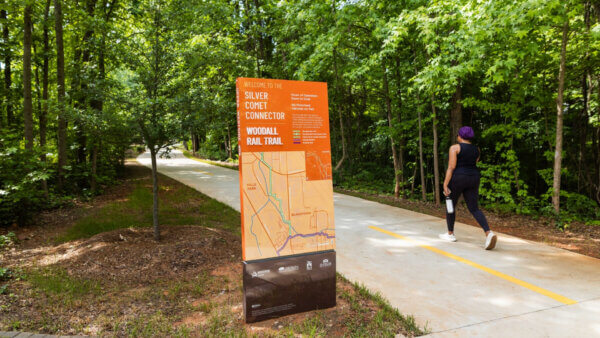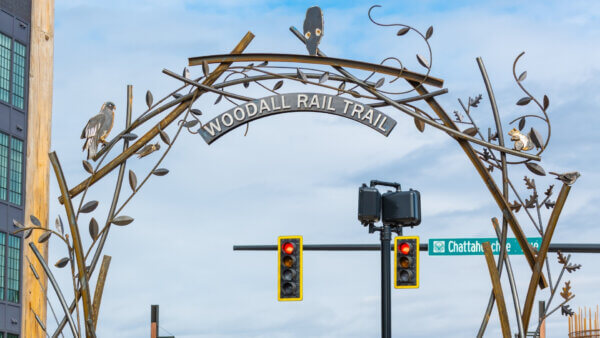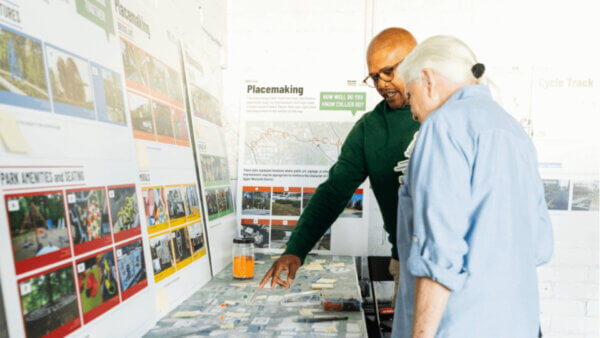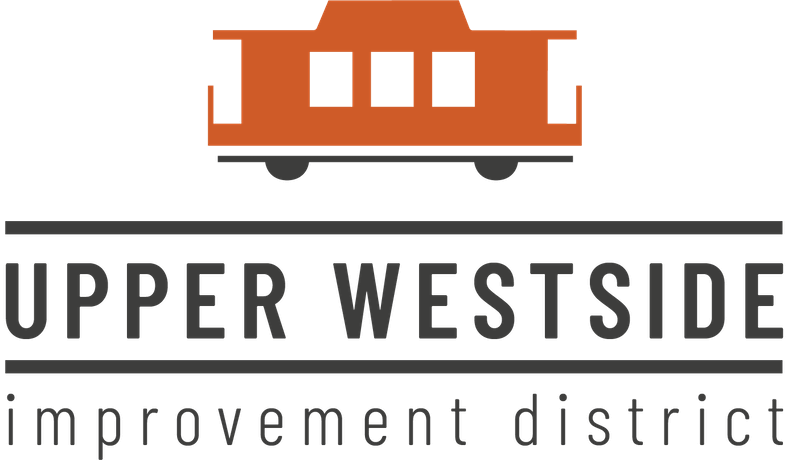Blandtown is one of the five neighborhoods in the Upper Westside CID, centered around Huff Road between Howell Mill Road and Marietta Boulevard. The area is currently known for its numerous apartments, home decor stores, and eateries such as The Whelan and Souper Jenny. But Blandtown first came into being as one of the first African American neighborhoods in Atlanta after the Civil War.
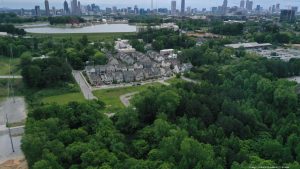
How did it get the name Blandtown? Unlike so many places in Atlanta that are named for White landowners and civic leaders (for example, Huff and Ellsworth), Blandtown is named for an African American landowner. Felix Bland was an enslaved laborer, freed by the U.S. Civil War, who was then bequeathed the land in this area by a woman named Viney Bland. Long thought to be Felix’s former slaveowner, recent research has revealed that Viney and her husband Samuel were Black themselves, and that Felix was their son. Samuel Bland purchased four acres of land in 1872, and Felix later inherited it. Although Felix later sold the land, his surname continued to grace the area.
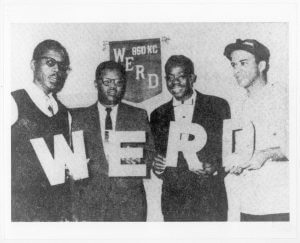
In the latter 19th century a residential neighborhood emerged—Blandtown—that became home to many African American families. Rail spurs came to the area in the 1890s, with a mill, factory, stockyard, and other businesses following soon after. (The Goat Farm Arts Center is actually a late 19th-century industrial complex in Blandtown.) These companies brought jobs and prosperity to the people of Blandtown. Despite a 1928 fire that destroyed 15 homes, two restaurants, and a church, the community thrived and eventually grew to over 200 homes. A section of Huff Road was even called Blandtown Road during the neighborhood’s heyday.
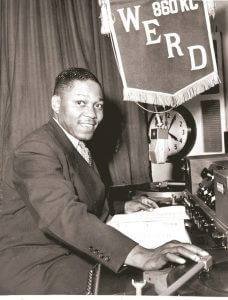
The first Black-owned radio station in the country, WERD, was based in Atlanta and built a broadcasting tower in Blandtown. Atlanta University professor and bank president Jesse B. Blayton Sr. purchased the station in 1949 and hired Jack “Jockey Jack” Gibson as its first disc jockey. Gibson was inducted into the Georgia Radio Hall of Fame in 2016. WERD played a crucial role in the Civil Rights Movement, providing media exposure for Rev. Dr. Martin Luther King, Jr. and the Southern Christian Leadership Conference.
The City of Atlanta annexed Blandtown as part of its 1952 expansion and in 1956 rezoned the area for heavy industrial use. This rezoning was racist in intent, with the goal of disrupting a cluster of African American residences to minimize the power of the Black vote in local elections. Heavy industry moved deeper into Blandtown and undermined the fabric of the neighborhood.
Despite the rezoning, Blandtown residents remained proud of their neighborhood. An elementary school was opened in 1959 and named for John P. Whittaker, a registrar at Atlanta University. Unfortunately the school was closed after several years, then repurposed for children with learning disabilities before closing for good in 1974. Most of the residences in Blandtown were demolished or fell into disrepair; and the African American residents moved on to other parts of the city.
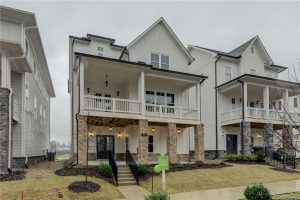
Along with the rest of the Upper Westside, Blandtown is now experiencing a resurgence. In addition to the apartments and condos lining Huff Road, new single-family houses are returning to Blandtown in Brock Built Homes’ West Town development. In a nod to the area’s heritage, two streets in West Town have been named in memory of Ms. Azalee Stewart Hester Wharton, a longtime president of the Blandtown Neighborhood Association.
If you’ve explored the area, you have likely seen the “Welcome to Blandtown” sign on English Street. The sign is the handiwork of local resident and artist Gregor Turk, who has made it his mission to revive the name and neighborhood of Blandtown. He has witnessed much of this new growth, seeing a crack house that once stood on his street now replaced with newly-constructed homes.
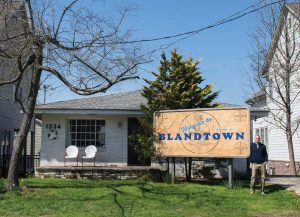
Let us keep the Bland family’s legacy in mind as we look to the future of Blandtown and the other neighborhoods of the Upper Westside. How can we make our district better and more inclusive? Please participate in our interactive mapping exercise, and tag spots where you would like to see an improvement or project. Just two minutes of your time can provide us with invaluable input and ideas.
How can we improve infrastructure, increase safety, and raise the quality of life for workers, business owners, and residents? How can we make our neighborhoods welcoming and diverse? We want to support a vision for the Upper Westside that strives for inclusion and equity. We invite you to join us.
LEARN MORE
- The Lost Black History of Midtown Atlanta and a Photoshoot
- Re/Covering Blandtown: An Interview with Gregor Turk
- Forgotten School Awaits Salvation: Boarded-up Whittaker for sale in Atlanta’s Westside
- Atlanta: Race, Class and Urban Expansion
- New West Midtown Neighborhood Honors Former Residential Leader
- New Georgia Encyclopedia: WERD
- Blandtown, Atlanta: an oddly named neighborhood losing its identity
- What’s in a Name? Blandtown

